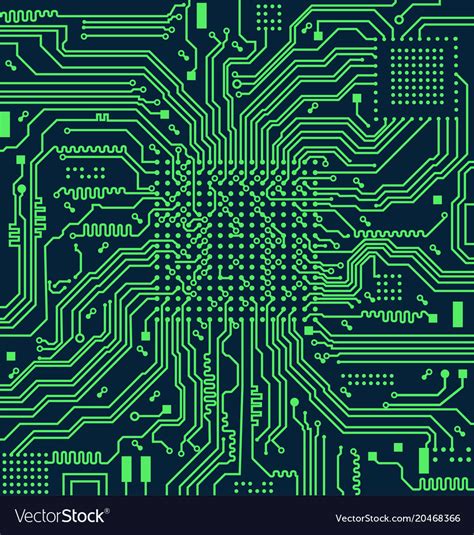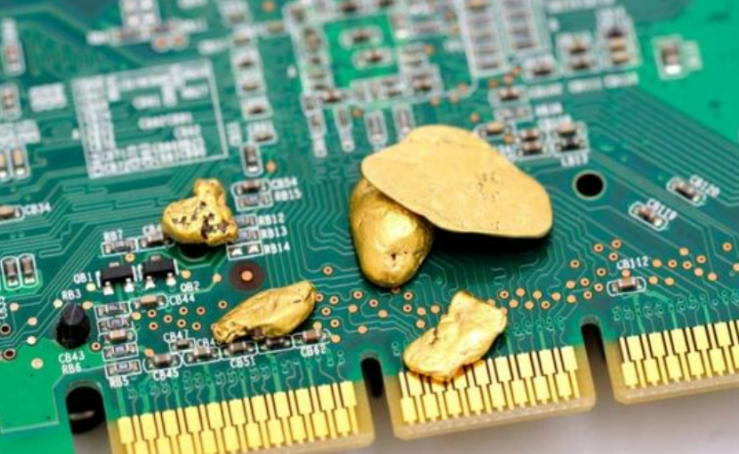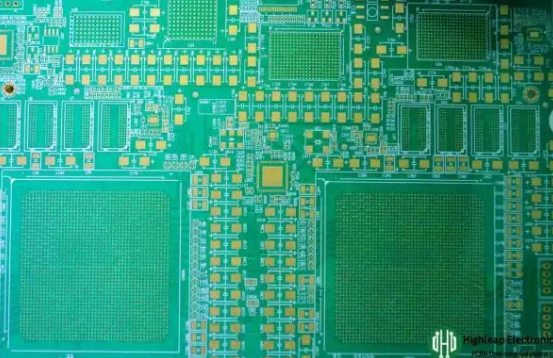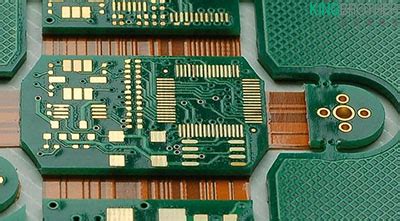High frequency pcb speaker
Understanding High Frequency PCB Design for Speaker Applications
In the realm of modern electronics, the design of high-frequency printed circuit boards (PCBs) for speaker applications has become increasingly significant. As audio technology advances, the demand for high-quality sound reproduction has led to the development of sophisticated speaker systems that rely heavily on the precision and efficiency of their underlying circuitry.
High-frequency PCBs play a crucial role in ensuring that these systems deliver optimal performance, making it essential to understand the intricacies involved in their design.
To begin with, high-frequency PCBs are designed to handle signals that operate at elevated frequencies, typically above 1 MHz. In speaker applications, these PCBs are responsible for managing the electrical signals that drive the speaker drivers, ensuring that the audio output is clear and accurate.
The design of such PCBs requires careful consideration of several factors, including signal integrity, impedance control, and thermal management.
These elements are critical in preventing signal loss, distortion, and overheating, which can significantly degrade audio quality.
One of the primary challenges in high-frequency PCB design is maintaining signal integrity.
At high frequencies, even minor imperfections in the PCB layout can lead to significant signal degradation. To mitigate this, designers must employ techniques such as controlled impedance routing and the use of high-quality dielectric materials.
Controlled impedance routing involves designing the PCB traces with specific widths and spacing to ensure that the impedance remains consistent throughout the circuit. This consistency is vital for minimizing reflections and ensuring that the signal reaches the speaker drivers without distortion.
In addition to signal integrity, impedance control is another crucial aspect of high-frequency PCB design.
Impedance mismatches can cause signal reflections, leading to loss of signal strength and potential interference with other components. To address this, designers often use simulation tools to model the PCB layout and predict how the impedance will behave at different points in the circuit. By doing so, they can make necessary adjustments to the trace dimensions and materials to achieve the desired impedance levels.
Thermal management is also a key consideration in high-frequency PCB design for speaker applications.
As the frequency of the signals increases, so does the amount of heat generated by the components. Excessive heat can lead to component failure and reduced performance, making it essential to incorporate effective cooling solutions into the PCB design. This can include the use of thermal vias, heat sinks, and strategically placed copper pours to dissipate heat away from critical components.
Moreover, the choice of materials plays a significant role in the performance of high-frequency PCBs.
Materials with low dielectric loss and high thermal conductivity are preferred, as they help maintain signal integrity and manage heat effectively. Common materials used in high-frequency PCB design include PTFE (polytetrafluoroethylene) and ceramic-filled laminates, which offer excellent electrical and thermal properties.
In conclusion, the design of high-frequency PCBs for speaker applications is a complex process that requires a deep understanding of various technical aspects. By focusing on signal integrity, impedance control, and thermal management, designers can create PCBs that enhance the performance of speaker systems, delivering high-quality audio output. As technology continues to evolve, the importance of meticulous PCB design in achieving superior sound reproduction will only grow, underscoring the need for ongoing innovation and expertise in this field.

Key Materials for High Frequency PCB Speakers
High frequency PCB speakers are integral components in modern electronic devices, offering precise sound reproduction and efficient performance. The design and functionality of these speakers heavily depend on the materials used in their construction. Understanding the key materials involved in high frequency PCB speakers is essential for optimizing their performance and ensuring reliability.
To begin with, the substrate material is a critical component in high frequency PCB speakers.
Typically, materials such as FR-4, a glass-reinforced epoxy laminate, are used due to their excellent mechanical and electrical properties. However, for high frequency applications, materials with lower dielectric constants and loss tangents, such as Rogers or Teflon-based laminates, are preferred. These materials minimize signal loss and ensure that the speaker can handle high frequencies with minimal distortion.
In addition to the substrate, the conductive materials used in the PCB are equally important.
Copper is the most common choice due to its excellent conductivity and relatively low cost. However, for high frequency applications, the thickness and purity of the copper layer must be carefully controlled to reduce skin effect losses, which can degrade performance at higher frequencies. In some cases, silver or gold plating may be applied to the copper traces to further enhance conductivity and reduce oxidation, thereby improving the longevity and reliability of the speaker.
The dielectric materials used between the conductive layers also play a significant role in the performance of high frequency PCB speakers.
These materials must have low dielectric losses to ensure efficient signal transmission. Polyimide films and ceramic-filled polymers are often used due to their superior thermal stability and low dielectric constants. These properties help maintain signal integrity and reduce interference, which is crucial for high frequency applications.
Moreover, the choice of adhesive materials used to bond the layers of the PCB can impact the overall performance of the speaker.
Adhesives must provide strong mechanical bonds while maintaining electrical insulation properties. Epoxy-based adhesives are commonly used, but for high frequency applications, low-loss adhesives that do not degrade the electrical performance of the PCB are preferred. These adhesives ensure that the layers remain securely bonded without introducing additional signal loss.
Furthermore, the design and layout of the PCB itself are influenced by the materials used.
For instance, the use of microstrip or stripline configurations can be optimized based on the dielectric properties of the substrate and the conductive materials. This optimization is crucial for minimizing signal reflections and ensuring that the speaker can accurately reproduce high frequency sounds.
In conclusion, the materials used in high frequency PCB speakers are pivotal in determining their performance and reliability. From the substrate and conductive materials to the dielectrics and adhesives, each component must be carefully selected and optimized to handle the demands of high frequency applications.
By understanding the properties and interactions of these materials, designers can create PCB speakers that deliver superior sound quality and durability, meeting the needs of modern electronic devices. As technology continues to advance, ongoing research and development in material science will likely lead to even more innovative solutions for high frequency PCB speakers, further enhancing their capabilities and applications.
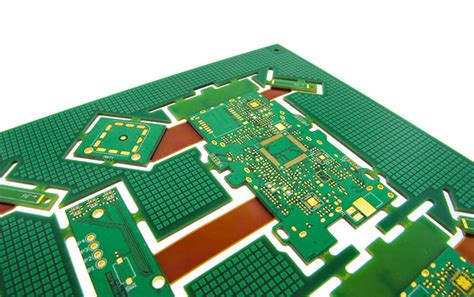
Challenges in Manufacturing High Frequency PCB Speakers
The manufacturing of high frequency PCB (Printed Circuit Board) speakers presents a unique set of challenges that require careful consideration and precision. As the demand for compact and efficient audio solutions grows, the need for high frequency PCB speakers has become increasingly prominent. These speakers are integral in various applications, from consumer electronics to specialized communication devices. However, the journey from design to production is fraught with complexities that manufacturers must navigate to ensure optimal performance and reliability.
One of the primary challenges in manufacturing high frequency PCB speakers is the intricate design requirements.
High frequency applications necessitate precise circuit layouts to minimize signal loss and interference. The design process must account for the electromagnetic compatibility and impedance matching, which are crucial for maintaining signal integrity. This requires advanced simulation tools and expertise in RF (Radio Frequency) engineering to predict and mitigate potential issues before they arise in the physical prototype.
Moreover, the choice of materials plays a critical role in the performance of high frequency PCB speakers.
The substrate material must possess excellent dielectric properties to support high frequency signals without significant attenuation. Common materials like FR-4 may not suffice, prompting the use of specialized substrates such as Rogers or Teflon-based laminates.
These materials, while effective, introduce additional cost and complexity into the manufacturing process
Furthermore, the thermal management of these materials is crucial, as high frequency operations can generate significant heat, potentially affecting the speaker’s performance and longevity.
Transitioning from design to production, the precision in manufacturing processes becomes paramount.
The miniaturization of components in high frequency PCB speakers demands exacting standards in fabrication. Techniques such as laser drilling and fine-line etching are often employed to achieve the necessary precision. However, these techniques require sophisticated equipment and skilled operators, adding layers of complexity and cost to the production process. Additionally, maintaining tight tolerances is essential to ensure that the final product meets the desired specifications and performance criteria.
Another significant challenge is the assembly and integration of components.
High frequency PCB speakers often incorporate a variety of components, including microcontrollers, amplifiers, and antennas, each with its own set of requirements. The integration of these components must be seamless to prevent any degradation in performance.
This necessitates meticulous attention to detail during the assembly process, as even minor misalignments or soldering defects can lead to significant performance issues.
Quality control and testing further complicate the manufacturing process. High frequency PCB speakers must undergo rigorous testing to ensure they meet the required standards for performance and reliability. This involves not only standard electrical testing but also specialized RF testing to evaluate the speaker’s performance at high frequencies. The testing process must be thorough and precise, as any oversight can result in subpar products reaching the market, potentially damaging the manufacturer’s reputation.
In conclusion, the manufacturing of high frequency PCB speakers is a complex endeavor that requires a harmonious blend of advanced design, precise material selection, meticulous manufacturing processes, and rigorous testing.
Each stage presents its own set of challenges, demanding a high level of expertise and attention to detail. As technology continues to evolve, manufacturers must remain agile and innovative to overcome these challenges and deliver high-quality products that meet the ever-growing demands of the market.

Innovations in High Frequency PCB Technology for Enhanced Speaker Performance
In recent years, the field of high-frequency printed circuit board (PCB) technology has witnessed significant advancements, particularly in its application to speaker systems. These innovations have been pivotal in enhancing speaker performance, offering superior sound quality and efficiency. As the demand for high-fidelity audio continues to grow, the role of high-frequency PCBs in speaker design has become increasingly crucial. This article explores the latest developments in this area, highlighting how these technological advancements are transforming the audio industry.
To begin with, high-frequency PCBs are integral to the design and functionality of modern speaker systems.
They serve as the backbone for electronic circuits, facilitating the transmission of signals with minimal loss. The ability to handle high-frequency signals efficiently is essential for speakers, as it directly impacts sound clarity and precision. Recent innovations in PCB materials and design have significantly improved their performance in this regard. For instance, the use of advanced dielectric materials has reduced signal loss, allowing for clearer and more accurate sound reproduction.
Moreover, the miniaturization of components has been a key trend in high-frequency PCB technology.
This has enabled the development of more compact and lightweight speaker systems without compromising on performance. By integrating smaller components onto the PCB, manufacturers can design speakers that are not only more aesthetically pleasing but also more efficient in terms of power consumption. This is particularly important in portable audio devices, where battery life is a critical consideration.
In addition to material advancements, the precision of PCB manufacturing processes has also seen remarkable improvements.
Techniques such as laser direct imaging and advanced etching methods have allowed for the creation of more intricate and precise circuit patterns. This precision is crucial for high-frequency applications, as even minor deviations can lead to significant signal degradation. Consequently, these manufacturing advancements have contributed to the production of speakers that deliver a more accurate and immersive audio experience.
Furthermore, the integration of high-frequency PCBs with digital signal processing (DSP) technologies has opened new avenues for speaker innovation.
DSP allows for real-time audio adjustments, enhancing sound quality by optimizing frequency response and reducing distortion. When combined with high-frequency PCBs, DSP technologies can significantly elevate the performance of speaker systems, providing users with a more dynamic and customizable listening experience.
Another noteworthy development is the use of multi-layer PCBs in speaker design.
Multi-layer PCBs offer increased circuit density, allowing for more complex and sophisticated audio processing capabilities. This is particularly beneficial in high-end audio systems, where the demand for superior sound quality is paramount. By utilizing multi-layer PCBs, manufacturers can incorporate additional features and functionalities into their speaker designs, further enhancing performance.
In conclusion, the innovations in high-frequency PCB technology have had a profound impact on speaker performance, driving the audio industry towards new heights of excellence. Through advancements in materials, manufacturing processes, and integration with digital technologies, high-frequency PCBs have enabled the creation of speaker systems that deliver unparalleled sound quality and efficiency. As these technologies continue to evolve, it is likely that we will witness even more groundbreaking developments in the realm of audio engineering, further enriching the listening experiences of consumers worldwide.


